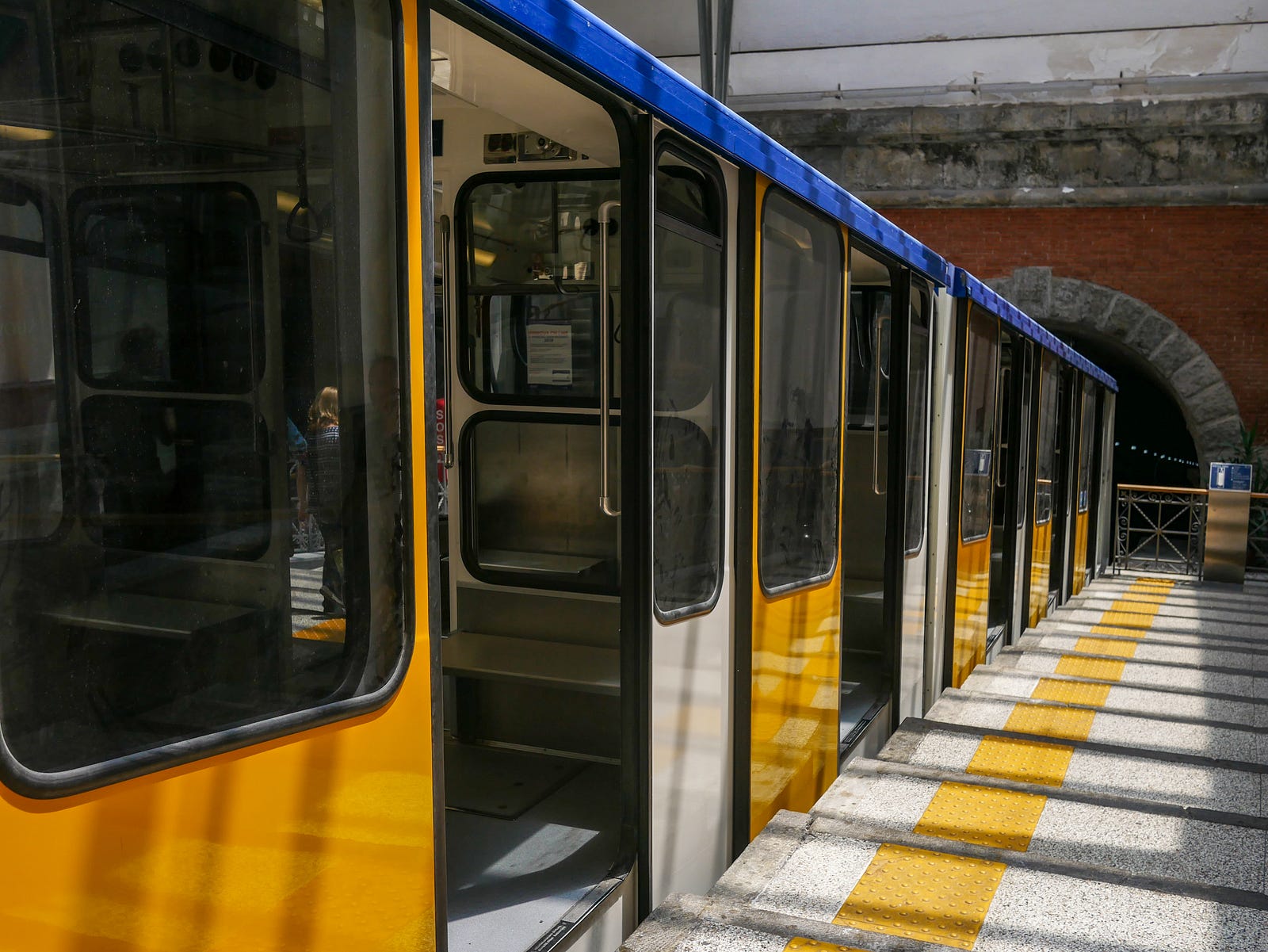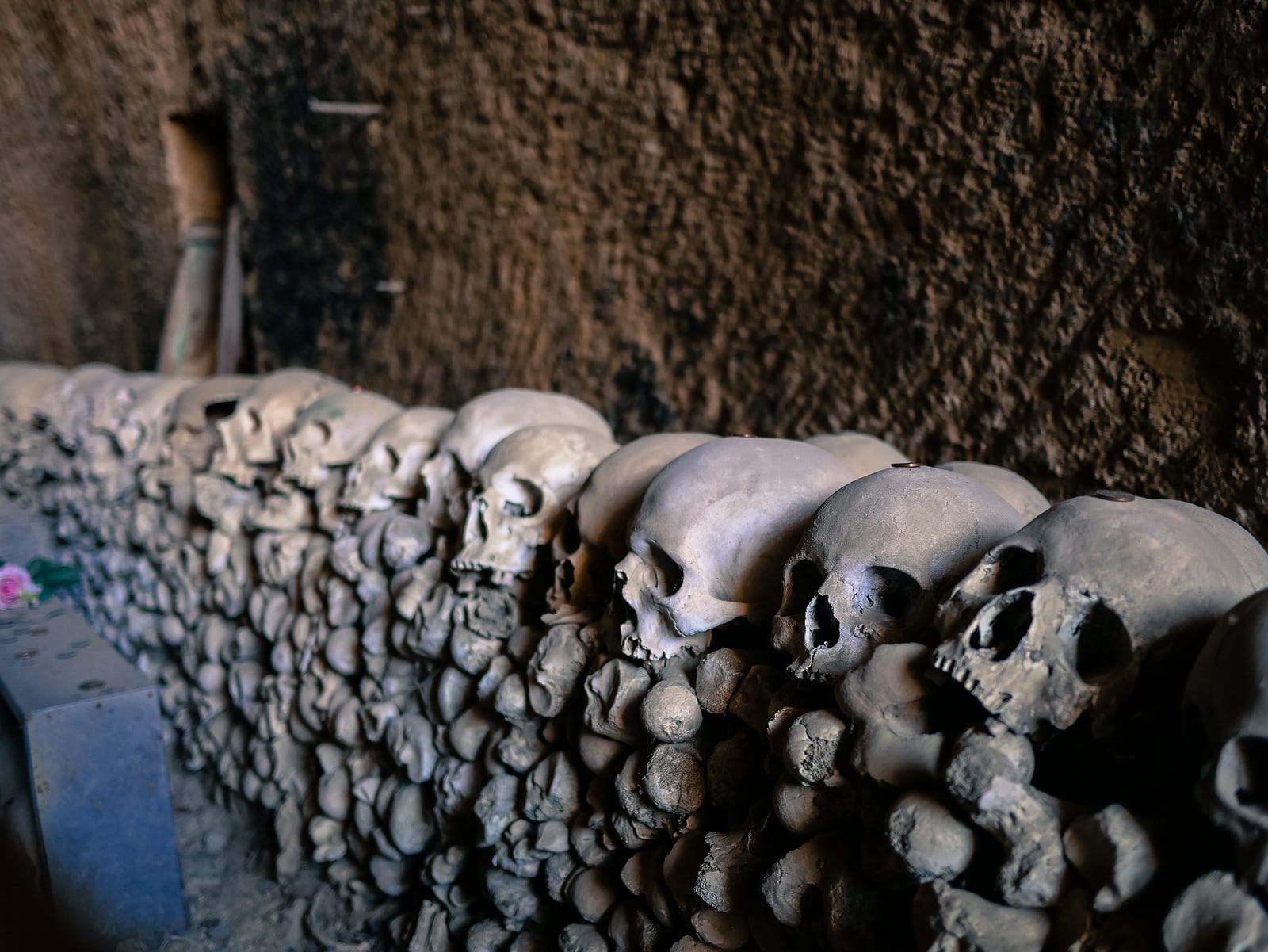Naples: a City of Grit and Bones
Italy through the ages
We’re staying in an AirBnb at the top of the city centre. The building is one of the many balconied terraces that form the endless, labyrinthine core of Italy’s notorious city and I fell in love with it the moment we arrived.It’s an apartment block, everything is. We wend our way down the worn stones steps, within the centre of the building but open to the clear skies. Already I can smell the city, humid and loud. The air is thick.We emerge onto the street and everything is intensified. Scooters rage down the potholed road, cars beep their horns for whatever reason they fancy, dogs snooze in the shadows of trees.Crossing the road alone is a task that requires taking your life in your hands. We’ve developed a habit though. We pick an Italian and follow them as they stride across, apparently oblivious to the traffic hurtling towards them.It takes some guts, crossing the road. Any road. But at the same time it’s comforting that there seem to be no rules — at least every driver is actively expecting pedestrians to walk out on them. When you expect that, you’re much more prepared to hit the brakes.
Centro Storico
Naples’ winding heart is Centro Storico, the historic centre. It’s beautiful in the way that so many Northern European cities are and in a way that Britain isn’t. The streets are narrow and rough, lined by endless towering buildings and laundry hanging from innumerable balconies.The shops are here in miniature, tiny souvenir shops, art boutiques and pizzerias. They’re nothing like the purpose-built monstrosities that line modern high streets and if you go inside, you have to be aware that the simple act of turning around is likely to knock over stands of trinkets.We roam the streets for the atmosphere alone. It’s frenetic and keeping a straight line is impossible. Every few seconds I’m dodging scooters, other tourists and even cars. Driving around here seems like an impossibility given that you could barely have three people walking abreast.And with so much noise and activity, knowing whether a scooter is coming up behind you isn’t so much of an act of listening, more like a cautious backward glance every few seconds.We reach Via Toledo and spend twenty minutes doing a loop of the back streets in search of the Augusteo funicular. The tourist map our host gave us is wildly inaccurate but the goose chase reveals streets we wouldn’t have discovered otherwise. In the end, it turns out that the funicular station is actually on Via Toledo and that we had already stopped to photograph it, failing to realise what it was.Ah ha, the stupidity of tourists.

I can’t imagine it’s changed much since its inauguration in 1928 and it’s part of the reason I wanted to take it in the first place. Funiculars in my mind are throwbacks to a sepia-toned time and as the light plumes in from the glass roof, I feel vindicated in my imagination.Within a few minutes we step off the climbing train in Vomero, a hill top district with a sprawling park and a panoramic view over Naples and its eponymous bay.It’s sweltering. Park benches under trees become our best friends, just breathing in this heat and humidity is a challenge. I remember somewhere else I want to see, and this time I suspect it will be cool.We find a metro station and take the train to Materdei to the north. Following brown signs and walking through peaceful residential streets, we make our way to Cimitero Delle Fontanelle.And it is cooler.
The city of the dead
It’s immediately astounding before we’ve even walked down the ramp into the dark. It’s a huge, yawning cavern just off a perfectly normal street of houses. The floor is dusty ground and the ceilings reach so far up they’re hard to see in the half light.Everywhere, there are neatly piled collections of bones.Femurs sit stacked against the walls, paper dry and topped by lines of skulls. Elsewhere there are skeletons of babies, sleeping under glass. Candles flicker. Fontanelle is more than just an ossuary. It’s a sort of Adopt-a-Skull situation.I know.Neapolitans wished to have their remains interred in their local churches and yet, with little space, a solution was needed. Existing bones were removed from churches to make way for the new. They were brought here, to Fontanelle.And then the Great Plague struck.In 1656 the tragedy produced an ungodly amount of corpses and the victims were brought to Fontanelle in their hundreds. It gained a reputation for a place to house the remains of those too poor or anonymous to have their own burial and then, in the 19th century, it was officially designated as such.When cholera struck the city in 1837, further masses of bodies found their home here — a great cemetery for the unnamed. But the citizens had their own ideas. They came to pray for the souls, to visit and care for the bones. These dead had little respect in life, but they would receive it in death.Fontanelle has an unknown quantity residing within it. It’s almost difficult to comprehend the sheer volume of human remains and what that means.But seeing the endless skulls laid out, one thing is clear. A skull is a skull is a skull. This is what we look like underneath the flesh and hair. We all have the same bones, the same skeleton. We are all, fundamentally, the same. The rest is just anatomical dress-up.
 Photo: Kitiara Pascoe
Photo: Kitiara Pascoe
Back in Time
It’s a slightly surreal feeling to emerge from Cimitero Delle Fontanelle, back into the harsh sunshine. We walk back down to the city centre and to the National Archeological Museum. This vast building houses hundreds of statues of Greek and Roman descent. Their perfectly sculpted bodies line grand corridors and rest on plinths, towering above the visitors. The majority of Pompeii’s artwork, statues and general objects have come to rest here. They stand preserved, relics from an ancient past, from a decimated city. By the time we leave I feel as though we’ve travelling from Ancient Rome to the 19th Century plagues and everywhere in between. Naples is a timeline from then to now. Now we decide to enjoy a bit of now. We track down a pasticceria and choose, at random, two cakes. We take them to the steps of an innocuous church opposite and eat them with hungry hands. And here we discover something else — There is nothing quite like exquisite Italian food to bring you slap bang into the present.